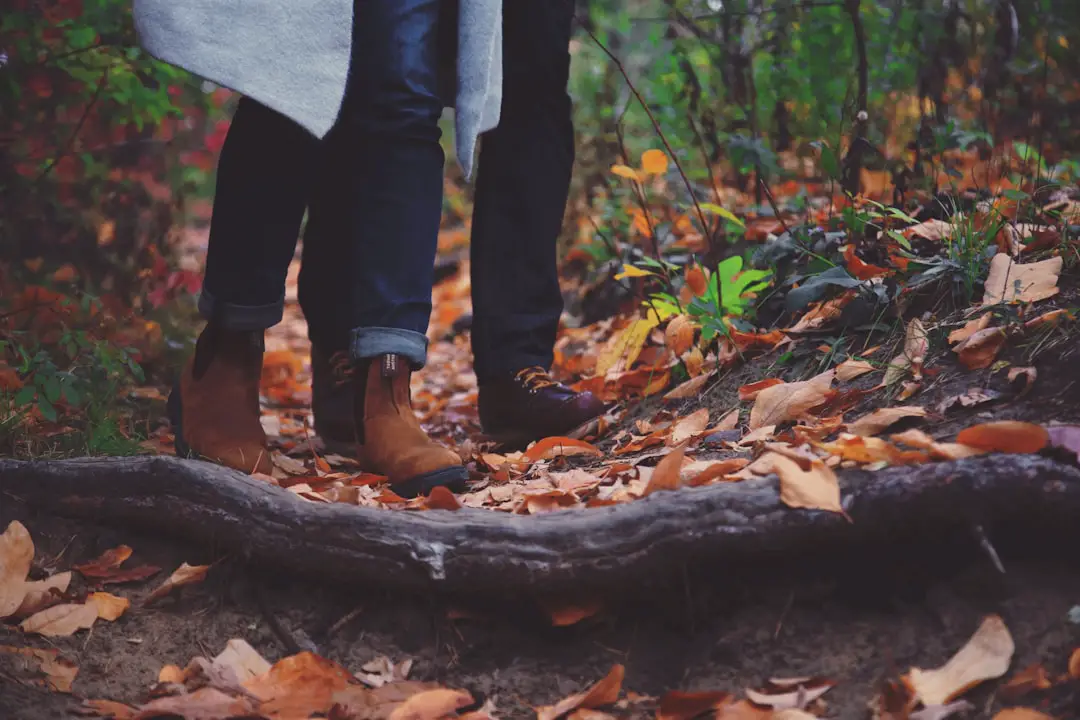When venturing into the great outdoors, the right gear can make all the difference in ensuring a safe and enjoyable experience. Among the essential items for any hiker, waterproof hiking shoes stand out as a critical component. The primary function of these shoes is to keep your feet dry, which is vital for comfort and safety during hikes.
Wet feet can lead to blisters, discomfort, and even hypothermia in colder conditions. Therefore, investing in a quality pair of waterproof hiking shoes is not just a matter of comfort; it is a matter of health and safety. Moreover, waterproof hiking shoes provide a level of versatility that is particularly beneficial for those who enjoy exploring diverse terrains.
Whether traversing muddy trails after a rainstorm or crossing streams, having footwear that can withstand moisture allows hikers to focus on the journey rather than worrying about soggy socks or slippery surfaces. This adaptability enhances the overall hiking experience, enabling adventurers to tackle various environments with confidence.
Key Takeaways
- Waterproof hiking shoes are important for keeping your feet dry and comfortable during outdoor adventures.
- Understanding waterproofing technology can help you choose the right hiking shoes for your needs.
- There are different types of waterproofing in hiking shoes, including membranes and treatments.
- The benefits of waterproof hiking shoes include protection from water, mud, and other elements, as well as breathability.
- Drawbacks of waterproof hiking shoes may include reduced breathability and potential for moisture buildup.
Understanding Waterproofing Technology
The technology behind waterproofing in hiking shoes has evolved significantly over the years, driven by advancements in materials and manufacturing processes. At the core of this technology are specialized membranes that prevent water from penetrating while allowing moisture vapor to escape. One of the most well-known materials used in waterproof footwear is Gore-Tex, a breathable fabric that has become synonymous with high-performance outdoor gear.
Gore-Tex works by utilizing a microporous structure that blocks water droplets while permitting sweat vapor to escape, thus maintaining a comfortable microclimate inside the shoe. In addition to Gore-Tex, other proprietary technologies have emerged, such as eVent and DryVent, each with its unique properties and benefits. eVent, for instance, boasts a direct venting system that enhances breathability even further than traditional waterproof membranes.
This technology is particularly advantageous for high-intensity activities where sweat management is crucial. Understanding these technologies can help hikers make informed decisions when selecting footwear that meets their specific needs.
Different Types of Waterproofing in Hiking Shoes

Waterproofing in hiking shoes can be categorized into several types, each offering varying levels of protection and performance. The most common methods include waterproof membranes, water-resistant treatments, and fully waterproof constructions. Waterproof membranes, as previously mentioned, are integrated into the shoe’s design and provide a robust barrier against water while allowing breathability.
This type is ideal for hikers who frequently encounter wet conditions. On the other hand, water-resistant treatments involve applying a chemical coating to the shoe’s exterior materials. While this method can repel light moisture and splashes, it may not hold up under prolonged exposure to water.
Water-resistant shoes are suitable for dry conditions or light rain but may not be reliable for serious hiking in wet environments. Fully waterproof constructions often involve sealed seams and specialized materials that create an impenetrable barrier against water. These shoes are designed for extreme conditions and are typically heavier and less breathable than their counterparts.
Benefits of Waterproof Hiking Shoes
| Benefits of Waterproof Hiking Shoes |
|---|
| Keeps feet dry in wet conditions |
| Provides protection from water-related injuries |
| Prevents blisters and discomfort |
| Enhances overall hiking experience |
| Increases durability and longevity of the shoes |
The advantages of waterproof hiking shoes extend beyond mere dryness; they encompass a range of factors that contribute to an enhanced hiking experience. One significant benefit is the reduction of foot fatigue. When feet remain dry, hikers are less likely to experience discomfort from blisters or chafing caused by wet socks.
This comfort translates into longer hikes and more enjoyable adventures, as hikers can focus on the scenery rather than their aching feet. Additionally, waterproof hiking shoes often feature rugged outsoles designed for traction on slippery surfaces. This added grip is crucial when navigating wet rocks or muddy trails, reducing the risk of slips and falls.
The combination of waterproofing and enhanced traction creates a safer hiking environment, allowing adventurers to explore with confidence. Furthermore, many waterproof shoes are designed with durability in mind, often incorporating reinforced materials that withstand the rigors of outdoor activities.
Drawbacks of Waterproof Hiking Shoes
Despite their many advantages, waterproof hiking shoes are not without their drawbacks. One notable concern is breathability. While waterproof membranes effectively block water from entering the shoe, they can also trap heat and moisture inside.
This can lead to sweaty feet during strenuous hikes, which may counteract some of the benefits of staying dry. Hikers must consider the climate and intensity of their activities when choosing footwear to ensure they do not sacrifice comfort for waterproofing. Another potential downside is weight.
Waterproof hiking shoes tend to be heavier than non-waterproof alternatives due to the additional materials and construction techniques used to achieve their protective qualities. For those who prioritize lightweight gear for fast-paced hikes or backpacking trips, this added weight may be a significant factor in their decision-making process. Additionally, waterproof shoes often come at a higher price point compared to non-waterproof options, which can be a consideration for budget-conscious hikers.
How to Test the Waterproofing of Your Hiking Shoes

Testing the waterproofing capabilities of hiking shoes can be an essential step before embarking on a long trek. One straightforward method involves the “sink test.” To perform this test, fill a basin or sink with water and submerge the shoe up to its laces for several minutes. Afterward, remove the shoe and check for any signs of water ingress inside.
If water seeps through, it indicates that the waterproofing is compromised. Another effective way to assess waterproofing is by wearing the shoes in wet conditions during a short hike or walk. Pay attention to how your feet feel throughout the experience; if they remain dry despite walking through puddles or wet grass, it’s a good sign that your shoes are performing well.
However, it’s important to note that even high-quality waterproof shoes may eventually lose their effectiveness over time due to wear and tear or improper care.
Maintenance Tips for Waterproof Hiking Shoes
Proper maintenance is crucial for prolonging the life and effectiveness of waterproof hiking shoes. One key aspect is regular cleaning; dirt and debris can clog the pores of waterproof membranes, reducing their breathability and overall performance. After each hike, it’s advisable to remove any mud or dirt using a soft brush or cloth and lukewarm water.
Avoid using harsh detergents or chemicals that could damage the shoe’s materials. Additionally, reapplying a water-repellent treatment periodically can help restore the shoe’s protective qualities. Many outdoor retailers offer sprays or treatments specifically designed for waterproof footwear.
Following the manufacturer’s instructions for application will ensure optimal results. Storing your shoes in a cool, dry place away from direct sunlight will also help maintain their integrity over time.
Choosing the Right Waterproof Hiking Shoes for Your Needs
Selecting the right pair of waterproof hiking shoes involves considering several factors tailored to your specific needs and preferences. First and foremost, assess the type of terrain you plan to hike on; different shoes are designed for various conditions, from rugged mountain trails to flat forest paths. For instance, if you frequently hike in rocky areas with steep inclines, look for shoes with excellent ankle support and aggressive tread patterns.
Fit is another critical consideration; poorly fitting shoes can lead to blisters and discomfort on long hikes. It’s advisable to try on multiple pairs while wearing the socks you intend to use during hikes to ensure an accurate fit. Additionally, consider your typical hiking conditions—if you often encounter wet environments or stream crossings, prioritize shoes with robust waterproofing features over lighter options that may not hold up as well.
Alternatives to Waterproof Hiking Shoes
For those who may find waterproof hiking shoes unsuitable for their needs or preferences, several alternatives exist that still offer protection against moisture while enhancing breathability. Trail running shoes are one such option; they are typically lighter and more breathable than traditional hiking boots but may sacrifice some level of water resistance. Many trail running models feature water-resistant uppers that can handle light rain or splashes without becoming saturated.
Another alternative is using non-waterproof hiking shoes combined with high-quality waterproof socks or gaiters. Waterproof socks provide an additional layer of protection against moisture while allowing for better breathability than fully waterproof footwear. Gaiters can also be worn over regular hiking shoes to prevent water from entering through the top while providing extra protection against mud and debris.
Waterproofing Treatments for Non-Waterproof Hiking Shoes
For hikers who already own non-waterproof hiking shoes but want to enhance their water resistance, various treatments are available on the market. These treatments typically come in spray or wax form and can be applied directly to the shoe’s exterior materials. Before applying any treatment, it’s essential to clean the shoes thoroughly to ensure maximum adhesion.
One popular option is silicone-based sprays that create a protective barrier against moisture without compromising breathability significantly. Another alternative is beeswax-based treatments that not only repel water but also condition leather uppers, keeping them supple and preventing cracking over time. Regular application of these treatments can significantly improve the performance of non-waterproof shoes in wet conditions.
Making the Right Choice for Your Hiking Adventures
Choosing the right footwear for hiking adventures requires careful consideration of various factors including terrain, weather conditions, personal comfort preferences, and intended use. Waterproof hiking shoes offer significant advantages in terms of keeping feet dry and comfortable during wet conditions but come with trade-offs such as weight and breathability concerns. Understanding different waterproofing technologies and maintenance practices can help hikers make informed decisions about their footwear choices.
Ultimately, whether opting for fully waterproof shoes or exploring alternatives like trail runners or treated non-waterproof options, ensuring that your feet remain protected will enhance your overall hiking experience. By taking into account individual needs and preferences while considering available technologies and maintenance practices, hikers can confidently select footwear that will support them on their outdoor adventures.
If you’re looking for the best hiking shoes that are waterproof, you may also be interested in checking out this article on the best solar charger for backpacking. Having a reliable solar charger can be essential for keeping your devices powered up while exploring the great outdoors.
FAQs
What are hiking shoes?
Hiking shoes are footwear specifically designed for outdoor activities such as hiking, trekking, and walking on rough terrain. They are built to provide stability, support, and protection for the feet during outdoor adventures.
Are all hiking shoes waterproof?
Not all hiking shoes are waterproof. Some hiking shoes are designed with waterproof materials and construction to keep the feet dry in wet conditions, while others are not. It’s important to check the product specifications or labels to determine if a particular pair of hiking shoes is waterproof.
What are the benefits of waterproof hiking shoes?
Waterproof hiking shoes provide protection against moisture, such as rain, puddles, and wet terrain. They help keep the feet dry and comfortable, reducing the risk of blisters and discomfort during outdoor activities. Additionally, waterproof hiking shoes can provide insulation in cold and wet conditions.
How are hiking shoes made waterproof?
Hiking shoes can be made waterproof through the use of waterproof materials such as Gore-Tex or eVent, as well as through specialized construction techniques such as seam-sealing and waterproof membranes. These features help to prevent water from entering the shoe while still allowing moisture to escape from the inside.
Can waterproof hiking shoes be breathable?
Yes, waterproof hiking shoes can be designed to be breathable. Many waterproof hiking shoes incorporate breathable membranes that allow moisture and heat to escape from the inside of the shoe, while still keeping water out. This helps to maintain a comfortable environment for the feet during outdoor activities.
